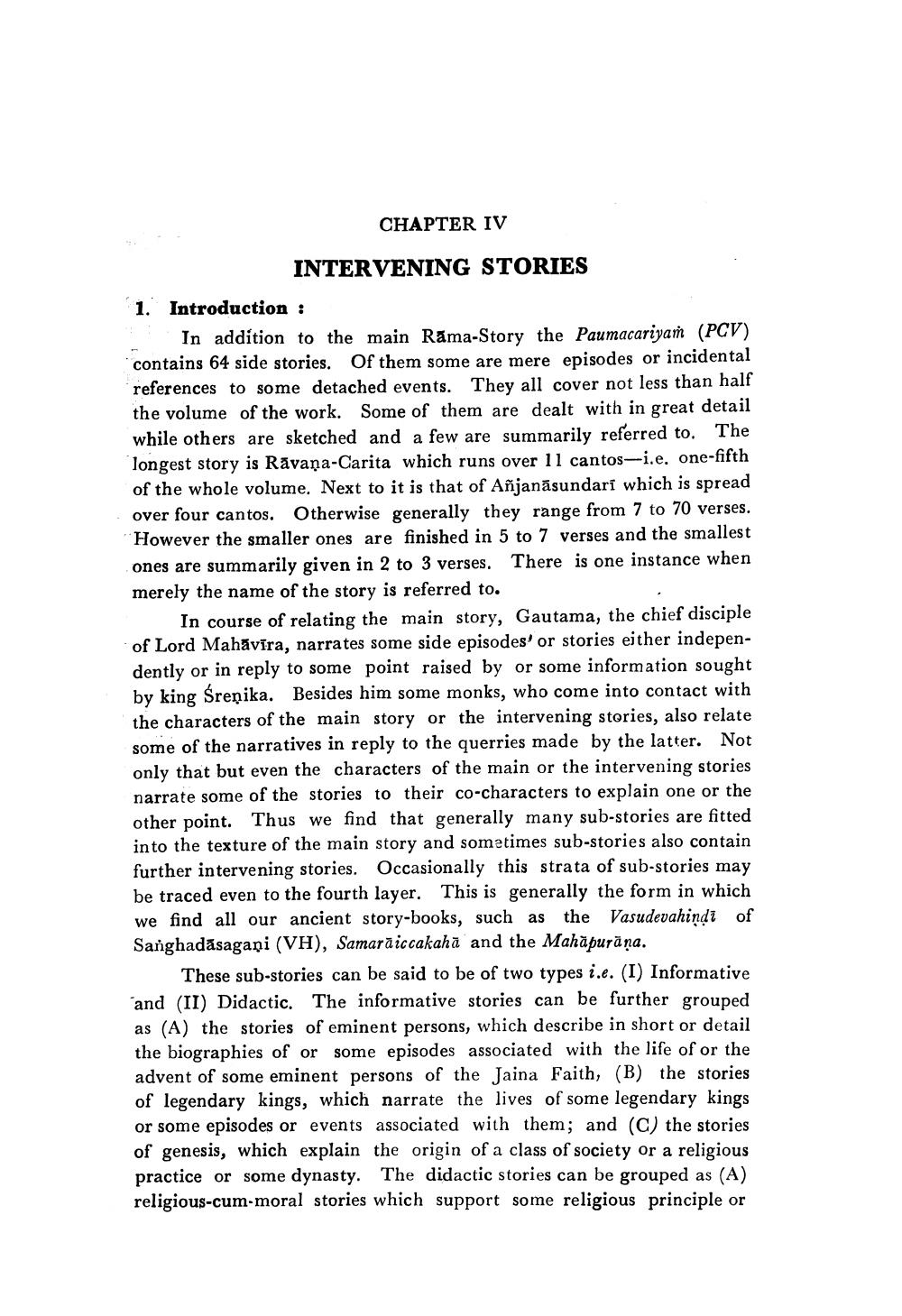________________
CHAPTER IV
INTERVENING STORIES 1. Introduction :
In addition to the main Rama-Story the Paumacariyaṁ (PCV) contains 64 side stories. Of them some are mere episodes or incidental references to some detached events. They all cover not less than half the volume of the work. Some of them are dealt with in great detail while others are sketched and a few are summarily referred to. The longest story is Rāvana-Carita which runs over 11 cantos-i.e, one-fifth of the whole volume. Next to it is that of Añjanāsundarí which is spread over four cantos. Otherwise generally they range from 7 to 70 verses. However the smaller ones are finished in 5 to 7 verses and the smallest ones are summarily given in 2 to 3 verses. There is one instance when merely the name of the story is referred to.
In course of relating the main story, Gautama, the chief disciple of Lord Mahāvīra, narrates some side episodes' or stories either independently or in reply to some point raised by or some information sought by king Śreņika. Besides him some monks, who come into contact with the characters of the main story or the intervening stories, also relate some of the narratives in reply to the querries made by the latter. Not only that but even the characters of the main or the intervening stories narrate some of the stories to their co-characters to explain one or the other point. Thus we find that generally many sub-stories are fitted into the texture of the main story and sometimes sub-stories also contain further intervening stories. Occasionally this strata of sub-stories may be traced even to the fourth layer. This is generally the form in which we find all our ancient story-books, such as the Vasudevahindi of Sanghadásagani (VH), Samarā iccakahā and the Mahapuräņa.
These sub-stories can be said to be of two types i.e. (I) Informative and (II) Didactic. The informative stories can be further grouped as (A) the stories of eminent persons, which describe in short or detail the biographies of or some episodes associated with the life of or the advent of some eminent persons of the Jaina Faith, (B) the stories of legendary kings, which narrate the lives of some legendary kings or some episodes or events associated with them; and (c) the stories of genesis, which explain the origin of a class of society or a religious practice or some dynasty. The didactic stories can be grouped as (A) religious-cum-moral stories which support some religious principle or




